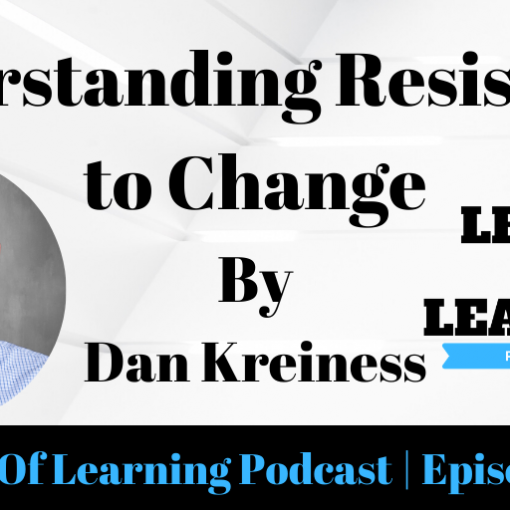As an experienced teacher, you may find yourself seeking new challenges and opportunities to grow professionally. One way to do this is by pursuing school leadership roles, which can offer a chance to make a larger impact on your school community and the field of education as a whole. In this article, we will explore the importance of teacher leadership in education, discuss various school leadership roles, and share essential steps to help you climb the ladder to become an effective school leader.
Importance of Teacher Leadership in Education
Teacher leadership is a critical component of successful schools, as it helps to drive positive change and improve student outcomes. Research has shown that schools with strong teacher leaders are more likely to implement effective instructional practices and foster a collaborative, supportive culture. As a teacher leader, you have the opportunity to influence your colleagues, advocate for your students, and contribute to the overall success of your school.
Moreover, teacher leaders often serve as a bridge between teachers and administrators, ensuring that the needs and concerns of teachers are heard and addressed. This can lead to more informed decision-making, a more effective use of resources, and better support for ongoing professional development. In short, teacher leaders play a vital role in creating and maintaining a high-performing, inclusive school environment in which all students can thrive.
Finally, teacher leadership can benefit you on a personal level, as it provides opportunities for professional growth, increased job satisfaction, and even career advancement. By stepping into a leadership role, you can develop new skills, broaden your perspective, and challenge yourself to make a difference beyond your own classroom.
Becoming a School Leader
There are several different school leadership roles available to educators, each with its own unique set of responsibilities and challenges. Some common positions include:
- Assistant Principal: As an assistant principal, you will work closely with the principal to oversee the day-to-day operations of the school, manage staff, and ensure a safe and supportive learning environment for students. You may also be responsible for implementing school policies, handling discipline issues, and coordinating school-wide programs and events.
- Principal: As the principal, you will serve as the chief administrator of your school, responsible for setting the vision and direction, managing resources, and leading school improvement efforts. You will also work closely with teachers, staff, parents, and community members to create a positive, inclusive school culture that promotes student success.
- Instructional Coach: As an instructional coach, you will provide professional development and support to teachers, helping them improve their instructional practices and better meet the needs of their students. You may work one-on-one with teachers, lead workshops, or facilitate collaborative planning sessions.
- Dean: As a dean, you will typically oversee a specific department or program within a school, such as special education, English language learners, or curriculum and instruction. You will work closely with teachers and other staff to ensure the success of your department and support the overall goals of the school.
- District Administrator: In this role, you will work at the district level, overseeing multiple schools and providing leadership and support to principals and other school leaders. District administrators often develop and implement district-wide policies and initiatives, manage budgets, and evaluate the effectiveness of schools and programs.
As you consider pursuing a school leadership role, it’s important to reflect on your own strengths, interests, and long-term career goals. This will help you identify the best path forward and ensure a successful transition from teacher to teacher leader.
Identifying Your Leadership Strengths and Areas for Growth
Before embarking on your journey toward a school leadership role, it’s important to take stock of your own leadership strengths and areas for growth. This self-assessment can help you develop a clear understanding of your skills, values, and vision as a leader, and guide your professional development efforts moving forward.
To begin, consider your past experiences as a teacher and any leadership roles you may have held, both inside and outside of the classroom. What have been your most significant accomplishments? What challenges have you faced, and how did you overcome them? Reflect on the feedback you’ve received from colleagues, supervisors, and students, as well as any formal evaluations or observations.
Next, think about the specific skills and qualities that you believe are essential for effective school leadership. This may include communication, collaboration, decision-making, problem-solving, empathy, resilience, and a commitment to continuous learning and improvement. Assess your own proficiency in these areas, and identify any gaps or areas for growth.
Finally, consider your personal leadership style and philosophy. What do you believe are the most important elements of effective leadership? How do you envision yourself as a school leader, and what kind of impact do you hope to have on your school community? By clarifying your own beliefs and values, you can better align your actions and decisions with your overall vision for success.
Gain Valuable Experience: From Teacher to Becoming a School Leader
To move from a teaching role to a school leadership position, it’s important to gain relevant experience and demonstrate your readiness for increased responsibilities. Here are some strategies to help you build your leadership skills and strengthen your resume:
- Volunteer for leadership opportunities within your school: Look for ways to take on additional responsibilities, such as serving on a school improvement committee, leading a professional learning community, or organizing a school-wide event. These experiences can help you develop important leadership skills and show your commitment to the success of your school.
- Pursue professional development opportunities: Attend workshops, conferences, and other professional development events focused on leadership topics, such as instructional coaching, data-driven decision-making, or school culture and climate. These experiences can help you build your knowledge and skills as a leader and expand your professional network.
- Seek out mentorship and coaching: Identify a successful school leader or administrator who can serve as a mentor or coach, offering guidance, feedback, and support as you work toward your leadership goals. This relationship can be invaluable in helping you navigate the challenges and opportunities of school leadership.
- Document your accomplishments: As you gain leadership experience and achieve successes in your various roles, be sure to document your accomplishments and the impact of your work. This evidence will be important when applying for school leadership positions and demonstrating your effectiveness as a leader.
Developing a Strong Professional Network and Mentorship
Building a strong professional network is essential for aspiring school leaders, as it can provide valuable resources, support, and opportunities for growth. Here are some tips for developing your network and establishing meaningful mentorship relationships:
- Join professional organizations: Become a member of local, state, or national professional organizations related to education and school leadership, such as the National Association of Secondary School Principals (NASSP), Association for Supervision and Curriculum Development (ASCD), or your local teachers’ union. Attend conferences and workshops, and participate in online forums and discussions to meet other professionals and stay informed about the latest trends and best practices in education.
- Network within your school and district: Build relationships with colleagues, administrators, and other staff members within your school and district. Attend school board meetings, serve on committees, and collaborate on projects to expand your network and deepen your understanding of the education system.
- Connect with school leaders in your community: Reach out to principals, assistant principals, and other school leaders in your area to learn about their experiences, ask for advice, and discuss common challenges and opportunities. These connections can provide valuable insights and support as you navigate your own leadership journey.
- Establish a mentorship relationship: Identify a successful school leader or administrator who can serve as a mentor or coach, offering guidance, feedback, and support as you work toward your leadership goals. This relationship can be invaluable in helping you navigate the challenges and opportunities of school leadership.
- Leverage social media and online platforms: Use social media, such as LinkedIn or Twitter, and online platforms like Edmodo or the ASCD Connected Community to connect with other educators and school leaders around the world. These virtual networks can provide a wealth of resources, ideas, and inspiration for your own leadership development.
Pursuing Advanced Education and Certifications for School Leadership Roles
In many cases, pursuing advanced education and certifications is a necessary step for teachers seeking school leadership roles. Depending on the position and location, you may be required to hold a master’s degree, a school leadership or administration license, or other specialized certifications.
To determine the specific requirements for your desired role and location, consult your state’s department of education or professional licensing board. They can provide information on the necessary credentials, as well as any additional requirements, such as coursework or internships.
When selecting a graduate program or certification course, consider the following factors:
- Accreditation: Look for programs that are accredited by a reputable organization, such as the National Council for Accreditation of Teacher Education (NCATE) or the Council for the Accreditation of Educator Preparation (CAEP). This ensures that the program meets high standards for quality and rigor.
- Curriculum: Review the program’s curriculum to ensure it covers the knowledge and skills necessary for success in your desired leadership role. Look for courses that focus on topics such as school lawand ethics, educational leadership theory, organizational management, and instructional leadership.
- Flexibility: Consider the program’s format and schedule, and ensure that it can accommodate your current work and personal obligations. Look for programs that offer online or hybrid options, evening or weekend classes, and the ability to complete coursework at your own pace.
- Cost: Investigate the cost of the program, including tuition, fees, and any additional expenses such as textbooks or technology. Look for scholarships, grants, or other financial assistance to help offset the cost.
- Reputation: Research the reputation of the program and the institution offering it. Look for reviews or testimonials from current or former students, and seek out recommendations from colleagues or other professionals in the field.
By pursuing advanced education and certifications, you can deepen your knowledge and skills as a leader, demonstrate your commitment to ongoing learning and growth, and increase your competitiveness for school leadership roles.
Building Your Leadership Brand and Showcasing Achievements
As you gain experience and pursue advanced education and certifications, it’s important to build your leadership brand and showcase your achievements. This can help you stand out to potential employers and demonstrate your effectiveness as a leader.
To build your brand, consider the following strategies:
- Develop a personal mission statement: Craft a clear and concise statement that outlines your vision and values as a leader. This can serve as a guiding principle for your actions and decisions, and help you communicate your leadership philosophy to others.
- Create a professional portfolio: Collect evidence of your accomplishments and leadership experiences, such as lesson plans, assessments, evaluations, and feedback from colleagues and supervisors. Organize these materials into a professional portfolio that can be easily shared with potential employers.
- Build an online presence: Create a professional website or social media profile, such as LinkedIn or Twitter, to showcase your leadership brand and connect with other educators and school leaders. Share your thoughts and ideas on education and leadership, and engage in online discussions and forums.
- Seek out speaking engagements and presentations: Look for opportunities to present at conferences, workshops, or other professional development events. This can help you build your reputation as a thought leader and demonstrate your expertise and effectiveness as a leader.
- Engage in community service and outreach: Get involved in your local community, volunteering your time and expertise to support education and other causes. This can help you build your leadership skills, expand your network, and demonstrate your commitment to making a positive impact on the world.
By building your leadership brand and showcasing your achievements, you can increase your visibility and credibility as a leader, and position yourself for success in school leadership roles.
Preparing for School Leadership Interviews and Assessments
When applying for school leadership roles, you will likely be required to participate in interviews and assessments to demonstrate your knowledge, skills, and readiness for the position. Here are some tips to help you prepare for these important steps:
- Research the school and district: Before the interview or assessment, research the school and district to gain a better understanding of their mission, values, and culture. Review their strategic plans, budget, and any recent news or events to prepare for potential questions or discussions.
- Practice effective communication: Practice your communication skills, including active listening, clear and concise speaking, and effective questioning. Be prepared to articulate your vision and goals as a leader, and demonstrate your ability to collaborate and communicate with others.
- Prepare for common interview questions: Review common interview questions for school leadership roles, and prepare thoughtful and authentic answers. Be prepared to discuss your experiences, accomplishments, challenges, and leadership philosophy.
- Demonstrate your knowledge and skills: During the interview or assessment, demonstrate your knowledge and skills related to the specific role and responsibilities. Use examples and evidence from your experience and education to support your responses.
- Be confident and professional: Finally, be confident and professional throughout the interview or assessment process. Dress appropriately, arrive on time, and demonstrate a positive attitude and demeanor. Show your passion and commitment for education and leadership, and be prepared to ask thoughtful questions about the position and school.
Ongoing Professional Development for School Leaders
Once you have secured a school leadership role, it’s important to continue your professional development and growth. Here are some strategies for ongoing learning and improvement:
- Participate in professional learning communities: Join or create a professional learning community with other school leaders to share ideas, discuss challenges, and collaborate on solutions.
- Attend workshops and conferences: Continue to attend workshops, conferences, and other professional development events to stay up-to-date on the latest trends and best practices in education and leadership.
- Engage in self-reflection: Take time to reflect on your own leadership practices and seek out feedback from colleagues, supervisors, and other stakeholders. Use this information to identify areas for growth and improvement.
- Pursue additional certifications and credentials: Consider pursuing additional certifications or credentials to deepen your knowledge and expertise in specific areas of leadership, such as instructional coaching, data analysis, or school law and policy.
- Seek out mentorship and coaching: Continue to seek out mentorship and coaching relationships with experienced school leaders who can offer guidance, support, and feedback as you navigate your role.
By committing to ongoing professional development, you can continue to grow and improve as a leader and make a lasting impact on your school community.
Embracing Transformational Leadership for Positive Change
Finally, as a school leader, it’s important to embrace a transformational leadership approach to drive positive change and promote student success. Transformational leadership is a style of leadership that focuses on inspiring and empowering others to achieve their full potential and creating a shared vision for success.
To embody transformational leadership, consider the following practices:
- Set a clear and inspiring vision: Develop a clear and inspiring vision for your school community, and communicate this vision to others. Encourage others to share their own ideas and perspectives, and work collaboratively to create a shared vision for success.
- Inspire and empower others: Inspire and empower others to take ownership of their work and contribute to the success of the school community. Encourage creativity, risk-taking, and innovation, and provide opportunities for professional growth and development.
- Build a positive and inclusive school culture: Foster a positive and inclusive school culture that values diversity, equity, and inclusion. Create a safe and supportive learning environment for all students, and encourage a culture of respect, empathy, and collaboration.
- Model effective leadership practices: Model effective leadership practices, such as active listening, open communication, and a commitment to continuous learning and improvement. Lead by example, and demonstrate your own passion and commitment to education and leadership.
By embracing transformational leadership, you can create a school community that is innovative, inclusive and focused on student success.
Conclusion
Becoming a school leader is a challenging and rewarding journey that requires dedication, hard work, and a commitment to ongoing learning and growth. By identifying your leadership strengths and areas for growth, gaining valuable experience, building a strong professional network, pursuing advanced education and certifications, showcasing your achievements, preparing for interviews and assessments, engaging in ongoing professional development, and embracing transformational leadership, you can climb the ladder to become an effective and impactful school leader.
Remember, the path to school leadership is not a straight line and may require perseverance, resilience, and a willingness to take risks and learn from failures. But with the right mindset and a commitment to your own growth and development, you can make a lasting impact on your school community and the field of education as a whole.
Enter your information to download my FREE eBook, “Lead to Inspire Growth”





